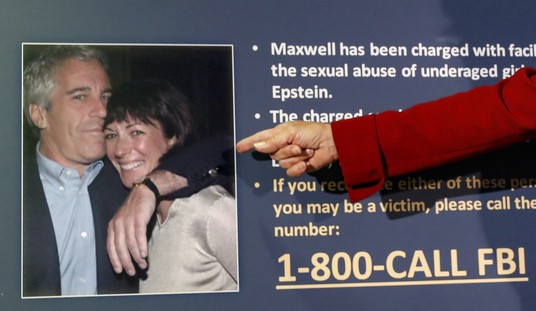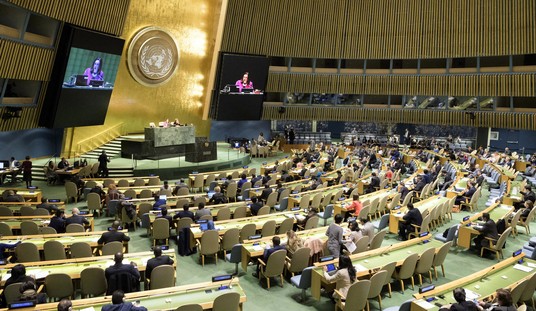Last month, on the first full weekend of the new Biden administration, China sent fighter jets and bombers into the airspace around Taiwan. As I said at the time, it was a not-so-subtle signal. Today, the U.S. sent another signal back by sending a Navy destroyer through the Taiwan straight:
The USS John S. McCain, a guided-missile destroyer based in Japan, conducted a routine journey through the channel, which divides China and Taiwan, complying with international law, Lt. Joe Keiley, a spokesperson for the U.S. Navy’s 7th Fleet, said in statement.
The ship’s transit demonstrated the U.S. “commitment to a free and open Indo-Pacific,” he said, adding that the military would “continue to fly, sail and operate anywhere international law allows.”
As CNN reports, these freedom of navigation transits through the straight aren’t new as both the Obama and Trump administration made them fairly frequently:
US warships transiting the Taiwan Strait are seen by Beijing as provocations that threaten stability in the region by encouraging supporters of Taiwanese independence.
The last transit occurred on New Year’s Eve when the McCain and a second destroyer, the USS Curtis Wilbur, went through the strait, according to US Navy statements.
US warships transited the waterway 13 times in 2020, according to the US 7th Fleet, the most since 12 such transits in 2016, the final year of former President Barack Obama’s administration.
So the message to China should be pretty clear: Nothing has changed. If they were hoping they could roll into Taiwan the way they did to Hong Kong, that’s not going to happen. At least I hope that’s true but the situation is complicated. Slate recently wrote a good primer on the relationship between China, Taiwan and the U.S. which points out there’s a lot of “useful fiction” as things stand at the moment.
The nation dates back to 1949, when Chinese nationalists fled the mainland after losing a war with Mao Zedong’s communists. For decades after its founding, the Taiwanese government was recognized by the U.S. as the legitimate government of all of China, and it held China’s seat on the U.N. Security Council. That changed in 1979, when Jimmy Carter’s administration normalized relations with the People’s Republic of China and severed diplomatic ties with the Taiwanese government…
Rather than an official embassy, a nonprofit known as the American Institute in Taiwan represents U.S. interests in Taipei. This is a strange and hypocritical arrangement, but one that has benefited both the U.S. and Taiwan. Taiwan has maintained its de facto independence—unlike in Hong Kong or Macao, Taiwanese citizens and institutions are mostly free from Beijing’s influence—and recent decades have brought a transition to democracy and rising prosperity. The U.S., meanwhile, has been able to maintain a valuable alliance while avoiding a military confrontation with another nuclear-armed superpower. The question is how long this unusual arrangement can last.
China’s efforts to gain greater control over Taiwan have so far been limited to a “psychological campaign.”
What are China’s actual future intentions for Taiwan? “The goal is really to convince the people of Taiwan that they have no choice but to unify with China and that the United States can’t save them. It’s part of a psychological campaign,” says Bonnie Glaser, senior adviser for Asia at the Center for Strategic and International Studies. Unfortunately for Beijing, the political trends are headed in the wrong direction for them. About two-thirds of Taiwanese no longer identify as Chinese, according to a recent poll. China’s recent crackdown on dissents in Hong Kong only solidified Taiwanese opposition to rule from Beijing under a “one country, two systems” arrangement. Tsai even used footage from Hong Kong in her campaign ads.
It’s not just citizens of Taiwan who are looking to escape China’s control, the number of people from Hong Kong moving to Taiwan doubled to nearly 11,000 in 2020. People are voting with their feet.
So the problem is that while China is trying to push for a grand reunification that includes Taiwan, Taiwan’s people are increasingly against it. And the only thing that is stopping the PRC from forcing the issue as they did in Hong Kong is the presence of the United States. Not only are our ships frequently in the area, our weapons incluing F-16s have been sold to Taiwan for its defense. So we have an unstable situation with growing pressure but, at least for the moment, the message from the Biden administration is that nothing has changed and nothing will change in the next four years so China better get used to that. That’s good enough for now.








Join the conversation as a VIP Member